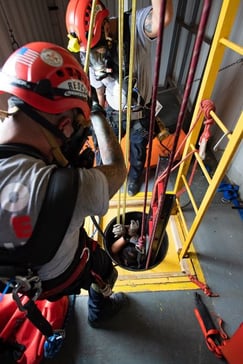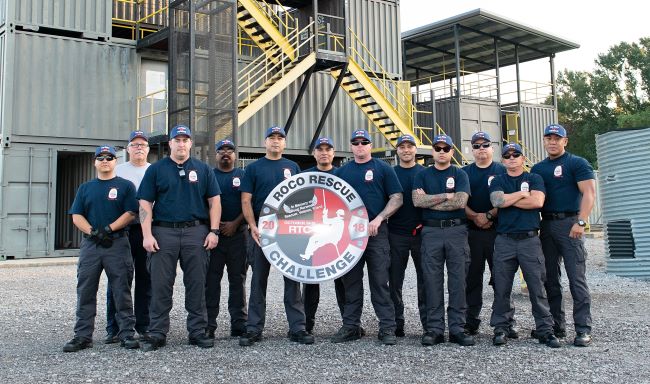Pat Furr, VPP Coordinator/Safety Officer and Technical Consultant for Roco Rescue, was honored last Friday with the North Dakota Safety Council's Duane Kuehn Outstanding Safety Professional award, the organization's top honor.

Over the course of his career, Pat has worn and continues to wear a variety of hats but his favorite role, he says, is sharing what he's learned about rescue and safety with an audience through a variety of platforms, from the written word to presentations at industry conferences. "If I can communicate my experiences to those who listen, I feel I am able to keep them safe," Furr says.
Please join us in congratulating Pat on this prestigious honor
Pat Furr is a chief instructor, technical consultant, VPP Coordinator and Corporate Safety Officer for Roco Rescue, Inc. As a chief instructor, he teaches a wide variety of technical rescue classes including Fall Protection, Rope Access, Tower Work/Rescue and Suspended Worker Rescue. In his role as technical consultant, he is involved in research and development, writing articles, and presenting at national conferences. He is also a member of the NFPA 1006 Technical Rescue Personnel Professional Qualifications Standard. Prior to joining Roco in 2000, he served 20 years in the US Air Force as a Pararescueman (PJ).


 Refineries, plants and manufacturing facilities have a wide range of permit-required confined spaces – some having only a few, while others may have hundreds. Some of these spaces may be relatively open and straightforward while others are congested and complex, or at height. With this in mind, are all your bases covered? Can your rescue team (or service) safely and effectively perform a rescue from these varying types of spaces? Or, are you left exposed? And, how can you be sure?
Refineries, plants and manufacturing facilities have a wide range of permit-required confined spaces – some having only a few, while others may have hundreds. Some of these spaces may be relatively open and straightforward while others are congested and complex, or at height. With this in mind, are all your bases covered? Can your rescue team (or service) safely and effectively perform a rescue from these varying types of spaces? Or, are you left exposed? And, how can you be sure?


 Our congratulations to the Burlington (Iowa) Fire Department on a successful grain bin rescue that happened in their community back in May of this year (2018). The incident was reported on Firehouse.com.
Our congratulations to the Burlington (Iowa) Fire Department on a successful grain bin rescue that happened in their community back in May of this year (2018). The incident was reported on Firehouse.com. It just might be easier than you think! If your municipal department needs this kind of training, and you have a training site that would be adequate – it could be that simple.
It just might be easier than you think! If your municipal department needs this kind of training, and you have a training site that would be adequate – it could be that simple.  We recently received a great letter (below) from the Valero Rescue Team who participated in Roco Rescue Challenge 2018. The team is from Wilmington, CA, and is pictured here.
We recently received a great letter (below) from the Valero Rescue Team who participated in Roco Rescue Challenge 2018. The team is from Wilmington, CA, and is pictured here.


